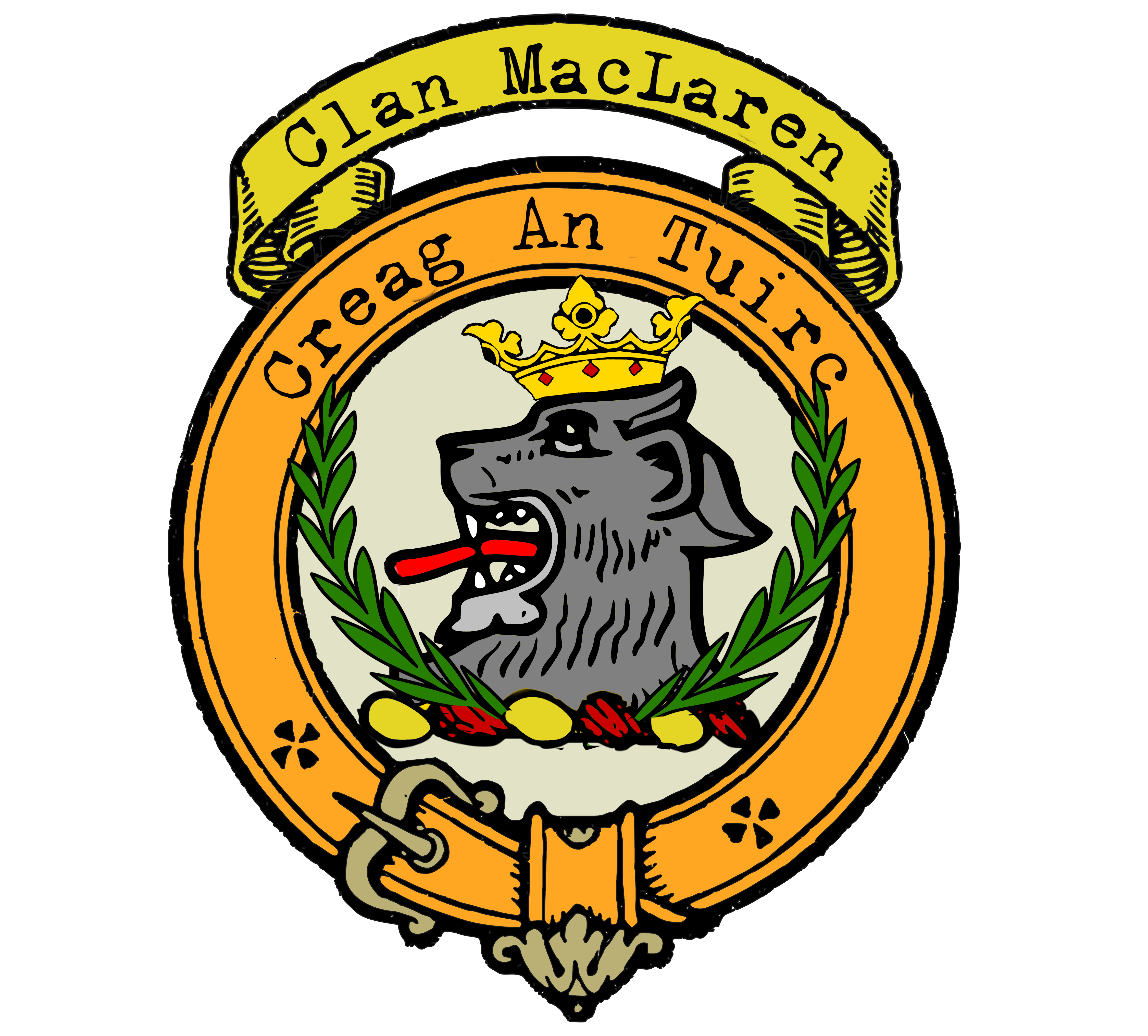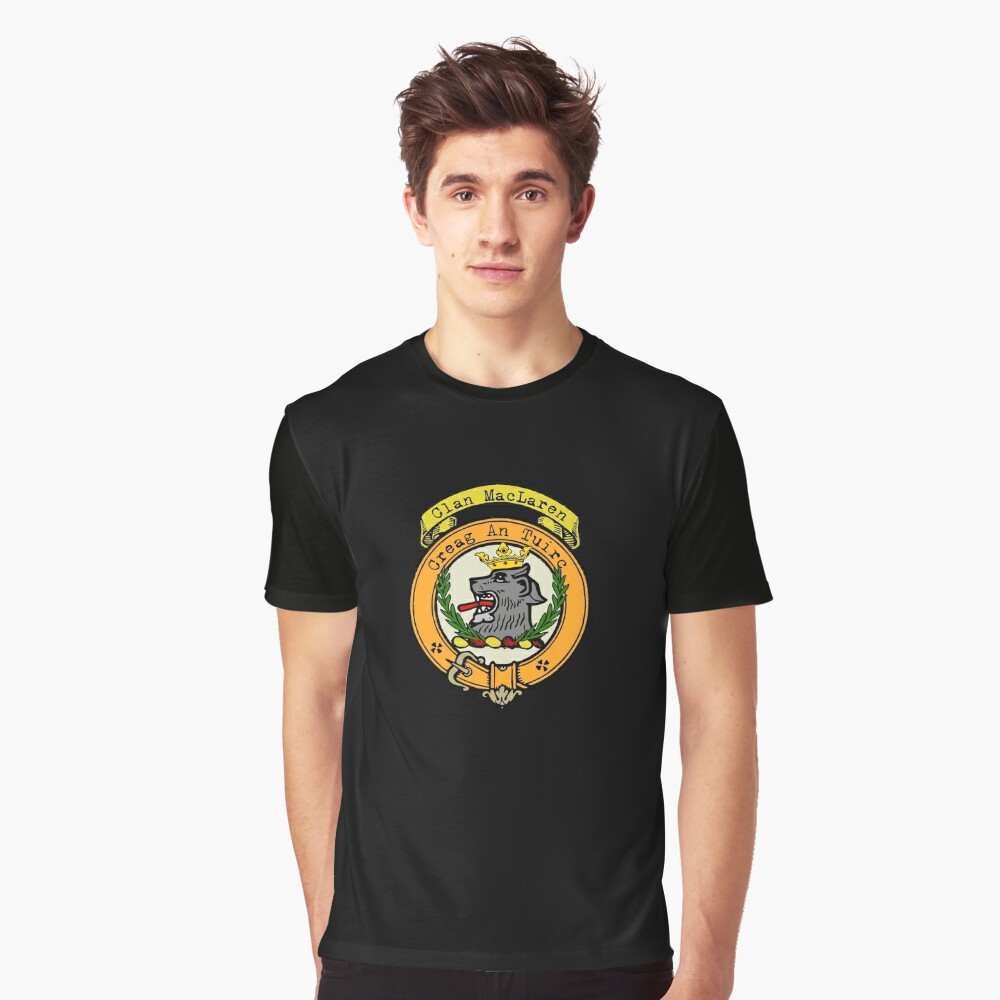Clan MacLaren Crest
|
|
CREST: A lion’s erased Sable crowned with an antique crown of six points Or, between two branches of laurel issuing from the Wreath at either side of the head both Proper MOTTO: Creag an Tuirc TRANSLATION: The boar’s rock VARIATIONS: McLaren |
 The MacLaren clan boasts two distinct origins. The first can be traced back to Argyll, where they claim descent from Lorn, son of Fergus MacErc, the visionary founder of the kingdom of Dalriada in the sixth century. In Gaelic, they are known as Clann Labhruinn. However, their eponymous ancestor is often considered to be Laurence, Abbot of Achtow in Balquhidder, a figure who lived during the thirteenth century. The MacLaren clan boasts two distinct origins. The first can be traced back to Argyll, where they claim descent from Lorn, son of Fergus MacErc, the visionary founder of the kingdom of Dalriada in the sixth century. In Gaelic, they are known as Clann Labhruinn. However, their eponymous ancestor is often considered to be Laurence, Abbot of Achtow in Balquhidder, a figure who lived during the thirteenth century.
Balquhidder, nestled within the ancient princedom of Strathearn, serves as a significant location in the MacLaren clan’s history. The district’s heraldic device, the mermaid, is intricately linked to the Maclaren supporters and signifies their historical ties to the Murrays. In the historic Ragman Roll of 1296, which documented the Scottish nobles who pledged allegiance to Edward I of England, three names associated with Clan MacLaren emerge: Maurice of Tiree, Conan of Balquhidder, and Leurin of Ardveche. These mentions indicate the clan’s presence and involvement during significant times. The MacLarens faced numerous trials and tribulations throughout their history. In 1344, pressures from more powerful neighbors resulted in the deprivation of the title of the last Celtic Earl of Strathearn. Balquhidder subsequently passed into the hands of the Crown and, later, to the Murrays of Atholl. The clan’s inability to resist the Macgregor-led persecutions led to the plundering of their lands and their eventual appeal to the Campbells for protection. Throughout Scotland’s tumultuous history, Clan MacLaren demonstrated their unwavering loyalty and martial prowess. They fought alongside Montrose in support of Charles I during the Civil War, stood their ground at the Battle of Sheriffmuir during the Jacobite Rising of 1715, and rallied to the standard of Prince Charles Edward Stuart, the Young Pretender, in the fateful Jacobite Rising of 1745. At the Battle of Culloden in 1746, they valiantly fought on the right flank alongside the Appin regiments. Despite the trials they endured, the Maclarens persevered. Their presence and independence were acknowledged by the Acts of Parliament for the suppression of unruly clans in 1587 and 1594. The clan continued to thrive, farming the lands of Achtow until 1892. The present chief of Clan MacLaren, recognized by the Lord Lyon as Maclaren of Achleskine and chief of the Maclarens, continues to uphold the traditions and heritage of the clan. The acquisition of part of the ancient clan territory, including the revered clan heartland known as Great an Turc or the Boar’s Rock, symbolizes their unyielding spirit. |
|
Citations:
|
|

Purchase @ Redbubble
Purchase @ Amazon.com
Purchase @ Amazon.co.uk

